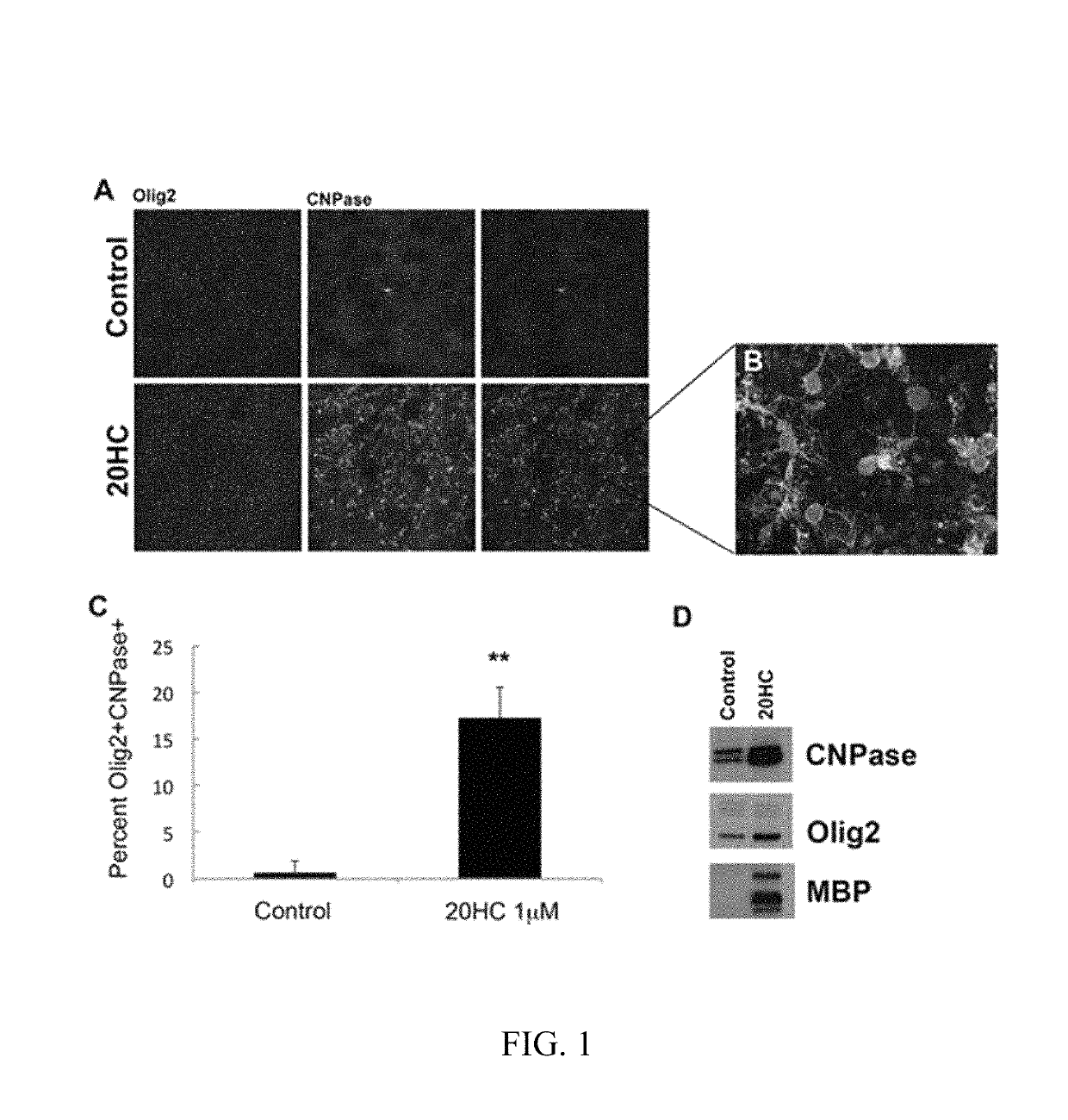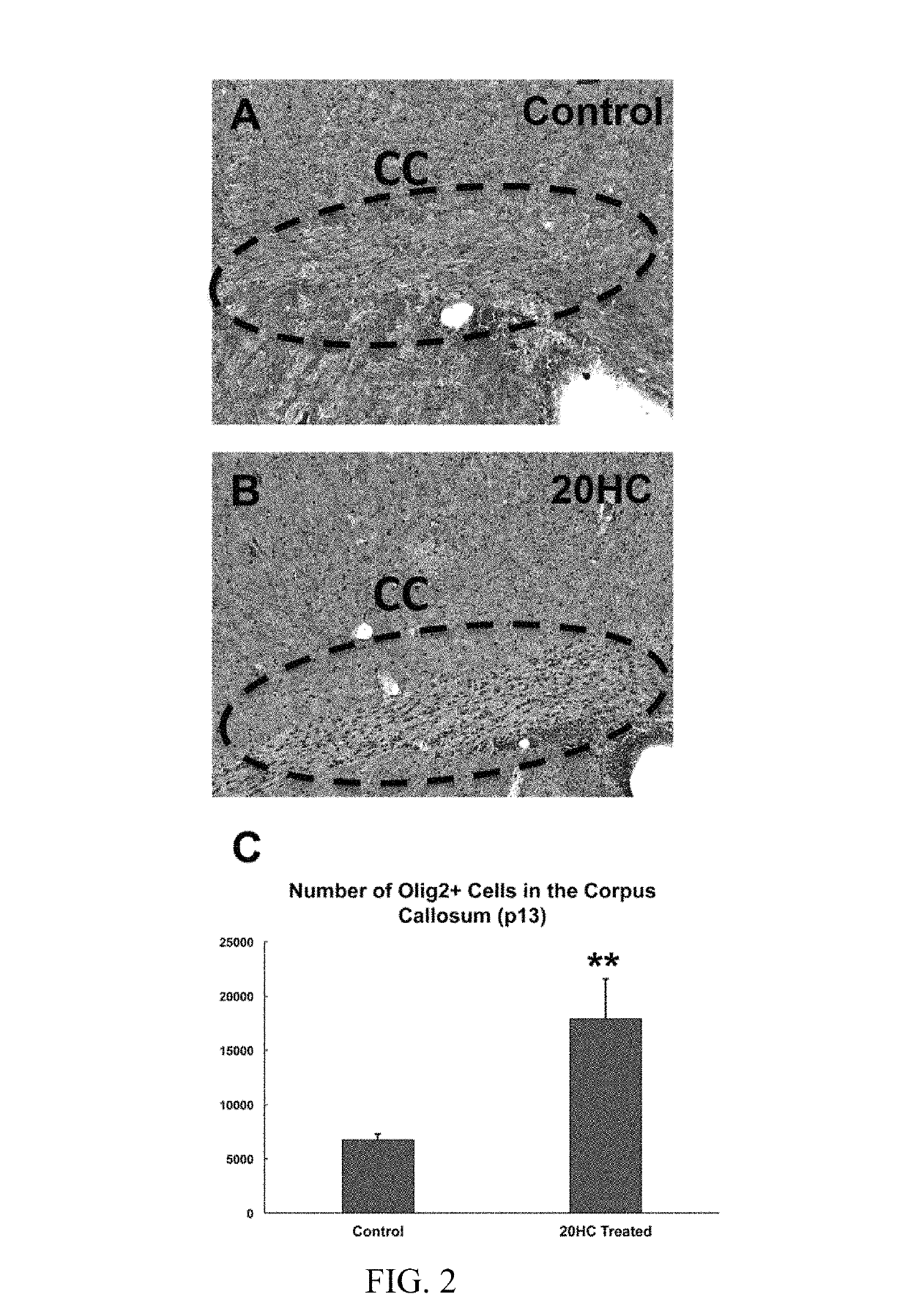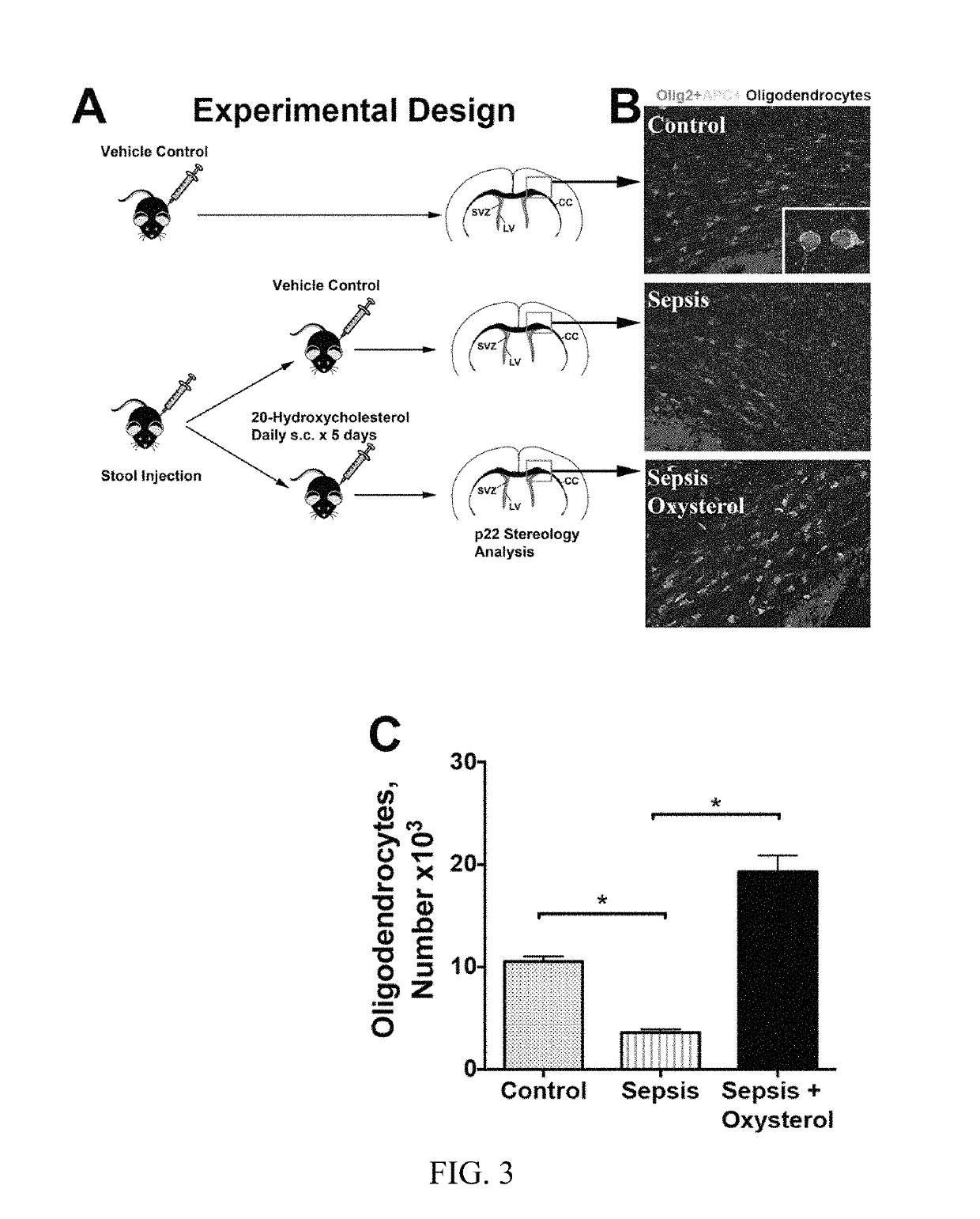Compositions and methods for the repair of myelin
a technology of myelin and composition, applied in the field of compositions, compounds, and methods for treating diseases and/or disorders related to myelin injury, can solve the problems of no effective therapies for myelin injury, cerebral palsy, seizures, cognitive delay, etc., and the mechanism of breast milk-associated improvement in myelin development is unknown
- Summary
- Abstract
- Description
- Claims
- Application Information
AI Technical Summary
Benefits of technology
Problems solved by technology
Method used
Image
Examples
example 1
Oligodendrocyte Differentiation from Neural Stem Cells
[0172]To determine the impact of oxysterol exposure on cellular differentiation, primary neural stem cells from neonatal mice were cultured in chamber slides. Cells were cultured in media alone (control) or 1 μM 20α-hydroxycholesterol for 7 days were then allowed to differentiate for 18 days. The differentiated cells were immunostained for markers of oligodendrocytes (Olig2 and CNPase) and visualized on a confocal microscope (FIG. 1A). Larger magnification of FIG. 1A shows that Olig2+ CNPase+ cells have oligodendrocyte morphology (FIG. 1B). Cell counting experiments demonstrated a significant increase in olig2+CNPase+ cells (oligodendrocytes) in the 20α-hydroxycholesterol treated groups (p<0.02; FIG. 1C). Protein samples from control and 20α-hydroxycholesterol treated stem cell cultures were then fractionated and probed for markers of the oligodendrocyte lineage. Western blot analysis revealed an increase in CNPase, Olig2 and mye...
example 2
ligodendrocyte Differentiation from Neural Stem Cells
[0173]20α-hydroxycholesterol was administered to uninjured postnatal mice during the normal myelination period to determine if oxysterol exposure increased the numbers of oligodendrocytes in vivo. Five day old mice were administered 4 daily doses of vehicle control (n=4) or 20α-hydroxycholesterol (n=4) subcutaneously (100 mg / kg / day) and rested. Five days after the final injection, the mice were analyzed to quantify the number of olig2+ cells in the corpus callosum (FIG. 2A, 2B). A significant increase in olig2+ cell population was observed in animals receiving 20α-hydroxycholesterol when compared to the control (p<0.02; FIG. 2C).
[0174]Taken together, these results show that 20α-hydroxycholesterol demonstrated an ability to significantly promote oligodendrocyte differentiation from neural stem cells both in vitro and in vivo.
example 3
Mouse Model of Myelin Injury
[0175]Perinatal bowel perforation is a common complication of premature birth and is strongly linked to myelin injury and cerebral palsy. Using a perinatal mouse model of bowel perforation to induce sepsis-associated diffuse myelin injury on postnatal day 5, sepsis mice were determined to have a 60% reduction of mature oligodendrocytes at postnatal day 25 (FIG. 3).
PUM
| Property | Measurement | Unit |
|---|---|---|
| swing speed | aaaaa | aaaaa |
| mass spectrometry | aaaaa | aaaaa |
| concentrations | aaaaa | aaaaa |
Abstract
Description
Claims
Application Information
 Login to View More
Login to View More - R&D
- Intellectual Property
- Life Sciences
- Materials
- Tech Scout
- Unparalleled Data Quality
- Higher Quality Content
- 60% Fewer Hallucinations
Browse by: Latest US Patents, China's latest patents, Technical Efficacy Thesaurus, Application Domain, Technology Topic, Popular Technical Reports.
© 2025 PatSnap. All rights reserved.Legal|Privacy policy|Modern Slavery Act Transparency Statement|Sitemap|About US| Contact US: help@patsnap.com



